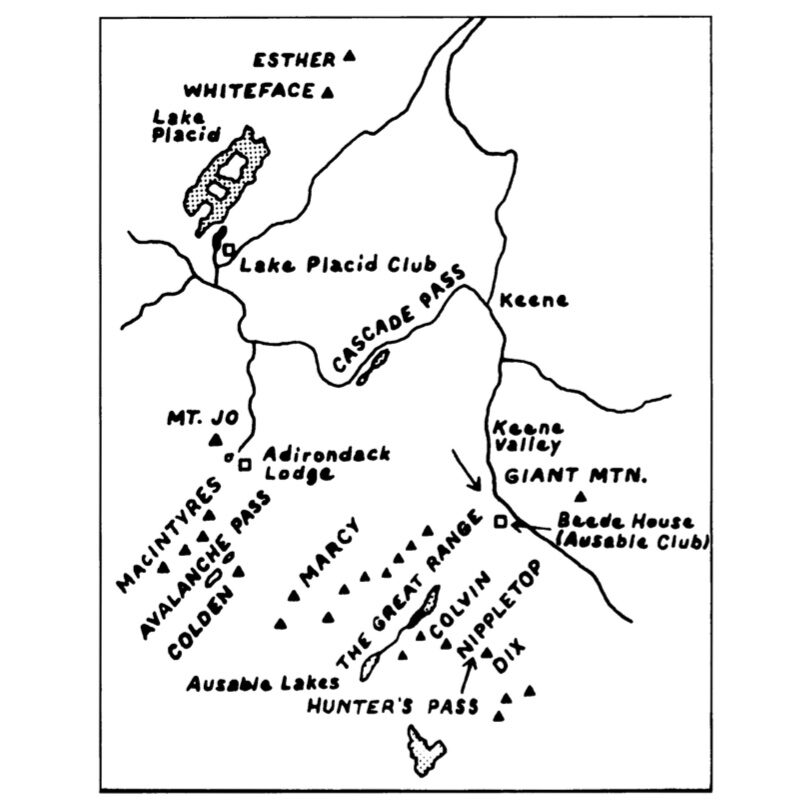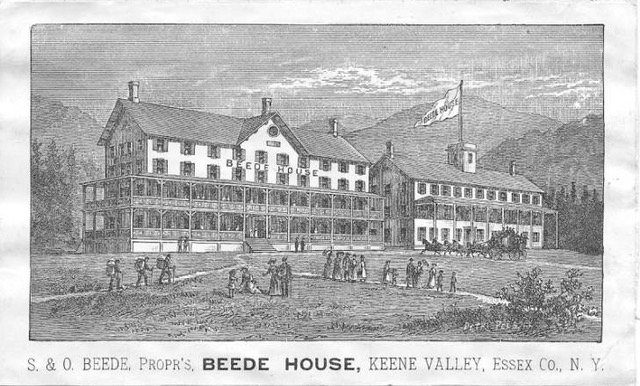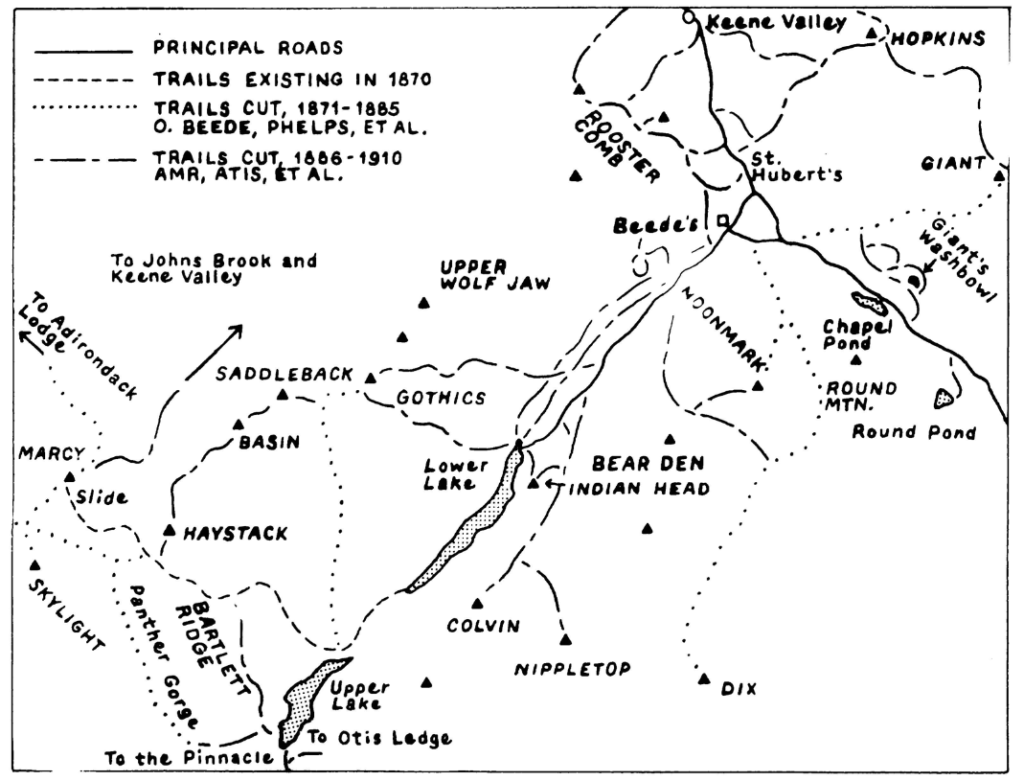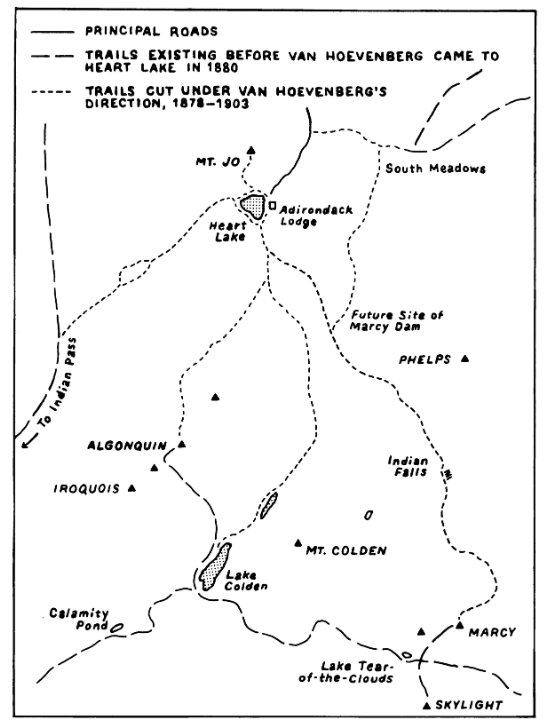Harrison Murray’s Adventures in the Wilderness described the beauty and excitement that the Adirondacks had to offer, and he inspired many city folks to visit the park. This increase in popularity of the park, lead by “Murray’s Fools,” resulted in the number of lodges and clubs to increase between the years 1869 and 1875 (Waterman, 162).
Prominent lodges that were paramount to the building of trails in the park include the Beede House and the Adirondack Lodge (Waterman 210).
Vacation lodging establishments specialized in “excursions, improvements, and explorations” for their visitors. In their book, Forest and Crag : A History of Hiking, Trail Blazing, and Adventure in the Northeast Mountains, writers Laura and Guy Waterman describe these improvements as “building trails and shelters,” while excursions specified as the investigation of “peaks, ridges, and valleys hitherto unexplored” (199-200).

These establishments were incredibly important to the history of hiking in the Adirondacks because one of their main goals was to build more trails so their guests could better access beautiful mountain views. More improvements to the surrounding area of these lodgings helped increase revenue for these organizations, thus, they invested lots of time and effort into creating new trail systems in the park.
The Beede House

The Beede House was established in 1876 within the Keene Valley by the Beede family. They cut a long trail from the house through the pass between Noonmark and Round Mountain up into the valley of the Bouquet River until they reached the summit of Mount Dix. Orland Beede was a known trail maker, as he continued to build trails up nearby mountains in the 1870s. As tourism started becoming more popular in Keene Valley, the Beede family built large hotels in the area to be used by visitors as a base for Adirondack hiking. Eventually, the Beede Family would sell a lot of their property to the Adirondack Mountain Reserve (AMR), an acreage of land that was created by trustees who are also members of the Ausable Club, to avoid being bought by lumbering companies (Waterman, 210).

The Adirondack Lodge


Henry Van Hoevenberg’s Adirondack Lodge also played an important role in trail building in the Adirondacks, as it would become a center for hiking and trail building in the park. In 1880, Van Hoevenberg built his lodge with the goal of making it the center of a spectacular trail system. He hired guides, Bill Nye being one of them, to start this project and cut trails for the lodge. Nye created a route that went up and past Indian Falls, reaching the summit of Marcy. It was one of many that placed the Adirondack Lodge at the center of the famous “Round Trip” trail system. This system gave guests direct access to the highest summits of the park, and his project would result in 50 miles of trail being created by 1881 (Waterman, 214-216).
Hiking flourished as a result of these organizations. A registrar in Lake Colden recorded more than a thousand people were recorded each summer in the years 1932-34, and more than two thousand annually from 1935 to 1937. On a popular route up to Marcy, more than three thousand visitors were recorded in 1937 (Waterman, 397).